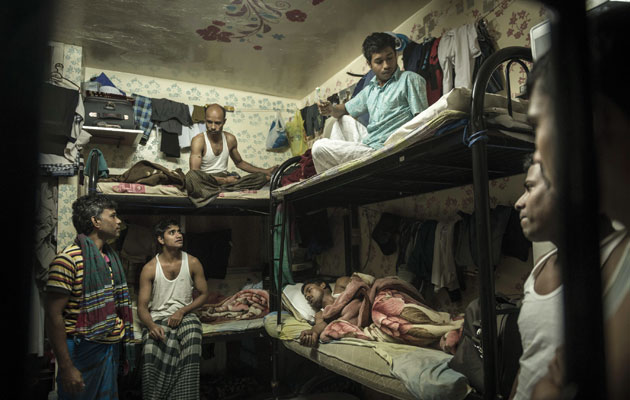|
|
||
|
Designers of mega-projects in Abu Dhabi should use their influence to push for better conditions for migrant workers, Human Rights Watch says to Icon as it reveals continuing exploitation on luxury Saadiyat Island development Migrant workers continue to be mistreated on the multibillion-pound Saadiyat Island development in Abu Dhabi – which when completed will include buildings by Frank Gehry, Zaha Hadid, Norman Foster, Jean Nouvel, Tadao Ando and Rafael Viñoly – Human Rights Watch (HRW) has revealed. In a report released today, the NGO reported that, despite improvements in conditions since it first reported conditions of forced labour on the site five years ago, workers on the $27 billion project continue to experience abuse, including employers withholding wages and benefits, failing to reimburse recruitment fees, confiscating passports and providing substandard housing. “Every time an independent body – be it a newspaper or an NGO – goes to Saadiyat, we keep finding the same problems that we found in 2009,” the report’s author Nicholas McGeehan – who was last year banned from returning to the United Arab Emirates – told Icon before its release. The report also claims contractors on the site informed UAE authorities about a workers’ strike, leading to the arbitrary deportation of several hundred workers. “A few workers appear to have instigated strike action, then a large number were arbitrarily swept up and sent home without any due process,” said McGeehan. “They were deported in a manner that seemed to be done to sent a message – to ensure no future disturbances arise.” Among the projects under construction on Saadiyat Island are Gehry‘s Guggenheim Museum, Nouvel‘s Louvre Abu Dhabi and Viñoly‘s New York University outpost. Hadid‘s Performing Art Centre, Tadao Ando’s Maritime Museum and Foster‘s Zayed National Museum, to which the British Museum is cultural advisor, will join them by the time the development opens in 2020. The latest report follows heated debate in the past year over architects’ role in improving working conditions in the Gulf – a region that has become synonymous with architectural ambition and labour abuse. At the end of last month, Hadid settled a lawsuit against the New York Review of Books and critic Martin Filler related to defamatory comments made about her attitude to migrant workers on her Qatar World Cup stadium project. Hadid said she donated the settlement money to an undisclosed charity that “protects and champions labour rights”. Last year, Gehry said he had hired a human rights lawyer to help him secure decent conditions on the Guggenheim scheme. Although HRW accepts that architects are not responsible for workers, the international charity is calling for them to use their influence to push for change in the region. “They haven’t gone far enough,” McGeehan said to Icon. “They should use their spotlight, credibility and influence to drive reform. If this is going to be such a fertile ground for architects in years to come – and it’s probably the world’s most lucrative construction sector – then it would be great to see architects taking a strong stance to make sure we’re not having these debates in years to come.” Though the developers did not grant access to the site, Human Rights Watch spoke to 116 present and former employees of contractors on Saadiyat Island in 2013 and 2014. HRW says its report mirrors the findings of independent monitors Mott Macdonald and PWC, as well as investigations by campaign group Gulf Labor and the Guardian newspaper. It accepts that the abuses involve a small percentage of workers, but point out that its findings indicate a gap in enforcement of the developers’ codes of conduct, implemented since HRW’s 2009 report. TDIC, the developer of the Guggenheim and the Louvre, and New York University are adamant that progress had been made in meeting their codes of conduct and that they are taking a robust approach to tackle any remaining violations. They also point out that they are not responsible for all the contractors on the island and argue that the abuses reported by HRW are not representative of working conditions overall. They did not confirm or deny the reports of deportations. Should architects be doing more to protect workers on their projects in the Gulf states? For a full analysis, pick up a copy of Icon’s latest issue, Camps, which also includes a report from Syrian refugee camps in Jordan and Lebanon and a discussion about designing a protest camp for effective resistance |
Words Debika Ray
Image: Sergey Ponomarev/New York Times / Redux / eyevine |
|
|
||
Human Rights Watch’s video that was made to accompany the report


















